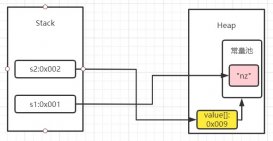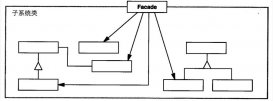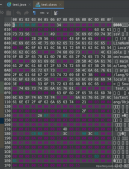java的阻塞队列,在实现时,使用到了lock和condition,下面是对其主要方法的介绍。
首先看一下,阻塞队列中使用到的锁。
|
1
2
3
4
5
6
|
/** main lock guarding all access **/ final reentrantlock lock; /** condition for waiting takes **/ private final condition notempty; /** condition for waiting puts **/ private final condition notfull; |
主要的锁是一个可重入锁,根据注释,它是用来保证所有访问的同步。此外,还有2个condition,notempty用于take等待,notfull用于put等待。
两个condition的初始化方法如下:
|
1
2
3
4
5
6
7
8
|
public arrayblockingqueue(int capacity, boolean fair) { if (capacity <= 0) throw new illegalargumentexception(); this.items = new object[capacity]; lock = new reentrantlock(fair); notempty = lock.newcondition(); notfull = lock.newcondition(); } |
下面介绍一下put方法。代码如下。
|
1
2
3
4
5
6
7
8
9
10
11
12
|
public void put(e e) throws interruptedexception { checknotnull(e); final reentrantlock lock = this.lock; lock.lockinterruptibly(); try { while (count == items.length) notfull.await(); enqueue(e); } finally { lock.unlock(); } } |
进行put时,首先对待插入的元素进行了非null判断。然后获取锁。之后用一个循环进行判断,如果元素已满,那么,就调用notfull的await方法,进行阻塞。当有别的线程(其实是take元素的线程)调用notfull的siginal方法后,put线程会被唤醒。唤醒后再确认一下count是否小于items.length,如果是,则进行加入队列的操作。
下面介绍一下take方法,代码如下:
|
1
2
3
4
5
6
7
8
9
10
11
|
public e take() throws interruptedexception { final reentrantlock lock = this.lock; lock.lockinterruptibly(); try { while (count == 0) notempty.await(); return dequeue(); } finally { lock.unlock(); } } |
进行take时,同样先要获取锁,然后判断元素个数是否为0,为0时需要等待在notempty条件上,等待被唤醒。唤醒之后,会再进行一次元素个数判断,然后进行出队列操作。
分析代码到这里的时候,我产生了一个疑问,如果当前队列慢了,执行put的线程在获取到锁之后,等待notfull条件上。那么,当执行take操作的线程想获取锁时,阻塞队列的锁已经被前面put的线程获取了,那么take将永远得不到机会执行。怎么回事呢?
后来,我查了condition的await方法,它的注释如下:
- causes the current thread to wait until it is signalled or interrupted.
- the lock associated with this condition is atomically released and the current thread becomes disabled for thread scheduling purposes and lies dormant until one of four things happens......
原因在await方法的作用上。因为condition是通过lock创建的,而调用condition的await方法时,会自动释放和condition关联的锁。所以说,当put线程被阻塞后,它实际已经释放了锁了。所以,当有take线程想执行时,它是可以获取到锁的。
另一个问题:当等待在condition上的线程被唤醒时,因为之前调用await前,已经获取了锁,那么被唤醒时,它是自动就拥有了锁,还是需要重新获取呢?
在await方法的注释中,有如下的一段话:
- in all cases, before this method can return the current thread must re-acquire the lock associated with this condition. when the thread returns it is guaranteed to hold this lock.
说明当等待在condition上的线程被唤醒时,它需要重新获取condition关联的锁,获取到之后,await方法才会返回。
总结
以上就是这篇文章的全部内容了,希望本文的内容对大家的学习或者工作具有一定的参考学习价值,谢谢大家对服务器之家的支持。如果你想了解更多相关内容请查看下面相关链接
原文链接:https://blog.csdn.net/li_canhui/article/details/84100166

















